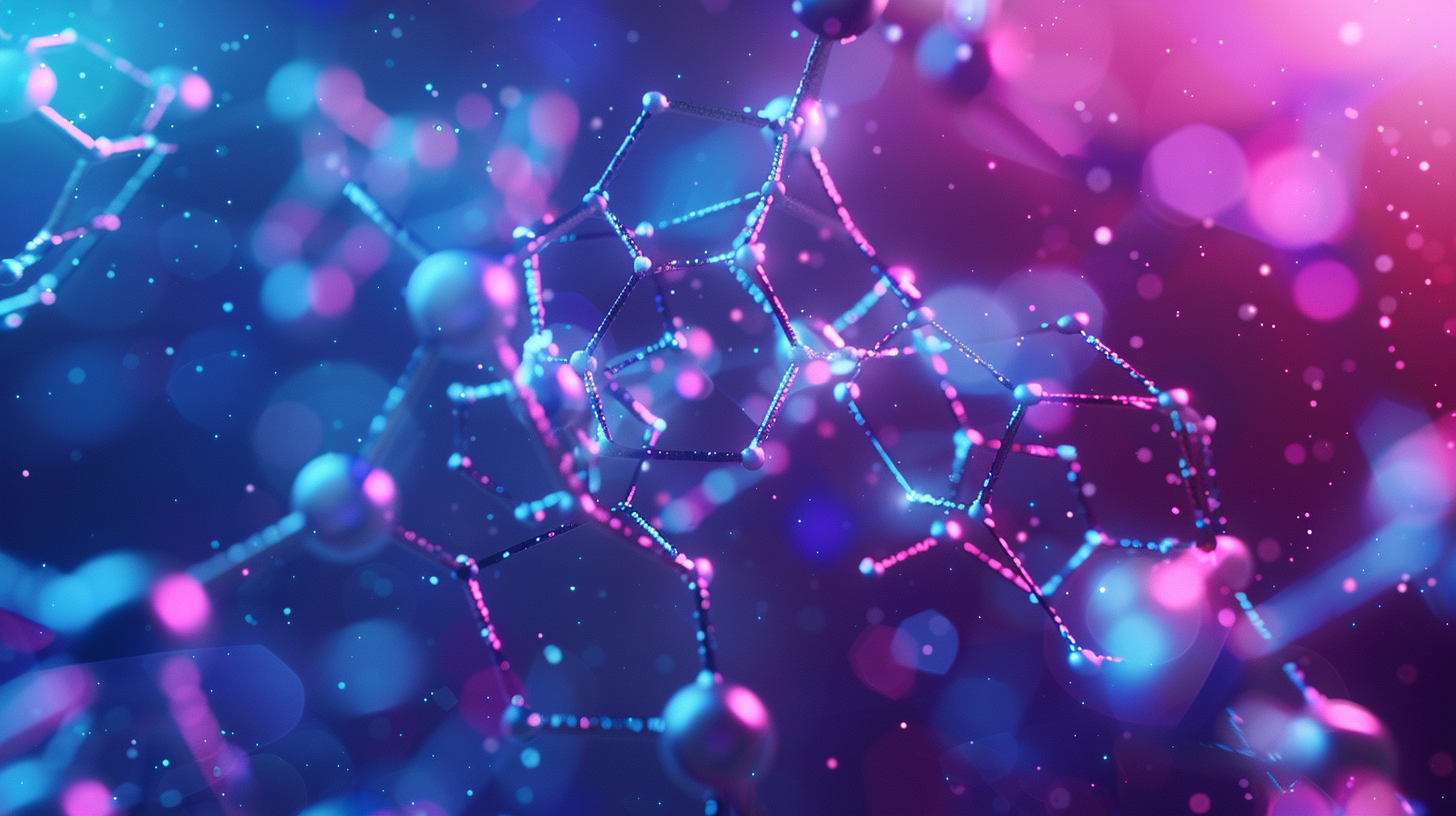TL;DR: AI in Drug Discovery
- AI reduces drug discovery timelines from 10-15 years to 3-5 years while cutting costs by 50-70%
- Machine learning identifies novel drug targets, optimizes molecular design, and predicts clinical outcomes
- Major pharma companies report 40-60% improvement in lead compound quality using AI platforms
- Regulatory agencies are developing frameworks for AI-discovered drugs with several approaching approval
- Future applications include fully automated drug design and personalized medicine optimization
Artificial intelligence is changing drug discovery in incredible ways. It's speeding up therapeutic development, cutting costs, and boosting success rates. From finding targets to running clinical trials, AI is shifting every stage of how we develop new drugs.
Why Drug Discovery Needed a Makeover
Traditional Challenges in Drug Development
Traditional drug discovery has been stuck with some serious problems. We're talking 10-15 year development timelines, $2.6 billion average costs, and a brutal 90% failure rate that wastes enormous resources (Paul et al., 2010). These roadblocks slow down innovation and keep patients waiting for treatments they desperately need.
Biological systems are incredibly complex. The chemical space for drug design is massive. And predicting clinical success has been nearly impossible with old-school approaches (Schneider, 2018). AI offers real solutions to many of these core problems.
How AI Changes Everything
AI shifts drug discovery by processing massive datasets, spotting subtle patterns, and making predictions that human analysis simply can't handle (Vamathevan et al., 2019). Machine learning algorithms can juggle millions of molecular interactions, genetic variations, and clinical outcomes all at once.
This computational muscle lets researchers systematically explore drug design possibilities while predicting success odds at each stage. The result? Much better resource allocation and smarter development decisions.
The Big Shift: AI is changing drug discovery from gut-instinct approaches to data-driven, predictive science that systematically optimizes how we develop treatments.
Target Identification and Validation
Finding Better Drug Targets with AI
Machine learning algorithms dig through multi-omics data, protein interaction networks, and disease connections to find new therapeutic targets (Chan et al., 2019). These approaches uncover targets that traditional gene-focused methods would completely miss.
AI systems can predict whether a target is actually druggable, assess safety risks, and figure out which patients might benefit most. All before spending huge amounts on experimental validation. This dramatically improves target quality while cutting development risks.
Understanding Biological Networks
AI analyzes biological networks to find targets that can tweak disease-relevant pathways without causing unwanted side effects. Network-based approaches often turn up surprising therapeutic opportunities in pathway regulation and protein interactions.
Systems biology modeling lets researchers predict how tweaking a target will ripple through biological systems. This helps identify targets with the best therapeutic windows and lowest toxicity risks.
Bringing Biomarkers into the Mix
AI combines biomarker data with target identification to enable precision medicine right from the discovery stage. Biomarker-guided target discovery finds targets that matter for specific patient groups, along with companion diagnostic strategies.
This approach enables development of targeted therapeutic strategies that maximize benefits while avoiding exposing patients who won't respond to experimental treatments.
Drug Design and Optimization
Molecular Generation and Optimization
Generative AI models create novel molecular structures optimized for specific therapeutic targets while considering drug-like properties, safety profiles, and synthetic accessibility. These models explore chemical space more efficiently than traditional medicinal chemistry approaches.
Deep learning algorithms can generate millions of potential drug compounds and predict their properties before synthesis, dramatically reducing the time and cost of lead optimization.
Structure-Based Drug Design
AI enhances structure-based drug design by predicting protein-drug interactions, optimizing binding affinity, and designing molecules that fit specific target binding sites. Cryo-EM and X-ray crystallography data inform these predictive models.
Machine learning approaches can predict how molecular modifications affect binding properties, enabling systematic optimization of lead compounds through computational rather than experimental approaches.
ADMET Prediction
AI predicts Absorption, Distribution, Metabolism, Excretion, and Toxicity (ADMET) properties of drug candidates, identifying compounds likely to succeed in human studies. These predictions prevent late-stage failures due to poor pharmacological properties.
Predictive ADMET models enable early optimization of drug properties, reducing development timelines and improving success rates through better compound selection.
Preclinical Development Acceleration
In Silico Safety Assessment
AI models predict safety risks and toxicity profiles before animal testing, reducing development costs while improving safety assessment quality. These models integrate chemical structure, target biology, and historical toxicity data.
Predictive safety models enable early identification of compounds with acceptable safety profiles while flagging potential risks that require additional evaluation or compound modification.
Biomarker Discovery and Validation
AI accelerates biomarker discovery by analyzing multi-omics data to identify molecular signatures associated with drug responses, safety events, and disease progression. These biomarkers guide clinical development and patient stratification.
Machine learning approaches can identify complex biomarker patterns that predict therapeutic responses more accurately than single marker approaches, enabling precision medicine development from early stages.
Formulation and Manufacturing Optimization
AI optimizes drug formulations and manufacturing processes by predicting optimal conditions, identifying potential issues, and suggesting improvements based on physicochemical properties and manufacturing constraints.
These applications reduce formulation development timelines while improving drug product quality and manufacturing efficiency through predictive optimization.
Integration Advantage: AI applications across multiple development stages create cumulative benefits that multiply individual improvements, changing overall development efficiency.
Clinical Trial Optimization
Patient Stratification and Recruitment
AI enables sophisticated patient stratification strategies that identify optimal trial populations while accelerating patient recruitment through automated screening of electronic health records and real-world data.
Machine learning models predict patient enrollment probabilities, identify optimal sites, and suggest protocol modifications to improve feasibility and success rates.
Adaptive Trial Design
AI enables adaptive trial designs that modify protocols based on accumulating data, optimizing patient allocation, adjusting endpoints, and stopping trials early when appropriate. These designs improve efficiency while maintaining scientific rigor.
Bayesian machine learning approaches enable real-time optimization of trial parameters based on emerging data about efficacy, safety, and patient responses.
Real-World Evidence Generation
AI analyzes real-world data to generate evidence about drug effectiveness, safety, and optimal use patterns in broader patient populations than traditional clinical trials. This evidence supports regulatory submissions and commercial strategies.
Natural language processing enables analysis of clinical notes, medical records, and patient-reported outcomes to understand drug performance in real-world settings.
Industry Applications and Success Stories
Pharmaceutical Company Implementations
Major pharmaceutical companies including Roche, Novartis, and GSK have implemented AI platforms across drug discovery pipelines, reporting improved target quality, accelerated timelines, and reduced development costs.
These implementations typically involve partnerships with AI companies, internal capability development, and systematic integration of AI tools across discovery and development functions.
AI-First Drug Discovery Companies
Companies like Recursion, Exscientia, and Atomwise built AI-first approaches that demonstrate superior efficiency in drug discovery. These companies report multiple clinical-stage programs developed using AI-driven approaches.
AI-first companies often achieve development milestones 2-3x faster than traditional approaches while maintaining or improving success rates through systematic optimization.
Academic and Nonprofit Applications
Academic institutions and nonprofit organizations leverage AI for drug discovery in neglected diseases and rare conditions where traditional approaches are economically unviable. AI reduces costs sufficiently to enable discovery in these underserved areas.
Open-source AI tools democratize drug discovery capabilities, enabling smaller organizations to pursue therapeutic development using sophisticated computational approaches.
Regulatory Landscape and Approval Pathways
FDA Guidance and Framework
The FDA is developing guidance for AI-discovered drugs, addressing data quality, model validation, and evidence requirements for regulatory submissions. Early guidance emphasizes explainability and validation of AI-generated insights.
Regulatory agencies recognize AI's potential while ensuring safety and efficacy standards are maintained through appropriate validation and oversight mechanisms.
First AI-Discovered Drugs Approaching Approval
Several AI-discovered drugs are advancing through late-stage clinical trials, with some approaching regulatory approval. These programs will establish precedents for AI drug development and regulatory acceptance.
Success of early AI-discovered drugs will likely accelerate regulatory acceptance and industry adoption of AI approaches across therapeutic development.
Regulatory Evolution: Regulatory frameworks are evolving to accommodate AI-driven drug discovery while maintaining safety and efficacy standards through appropriate validation requirements.
Technology Platforms and Infrastructure
Cloud Computing and Scalability
Drug discovery AI requires massive computational resources that cloud platforms provide on-demand. This scalability enables smaller organizations to access sophisticated AI capabilities without substantial infrastructure investments.
Cloud-based platforms also facilitate collaboration, data sharing, and rapid deployment of AI models across organizations and geographic boundaries.
Data Integration and Management
Successful AI drug discovery requires integration of diverse data types including molecular databases, clinical data, literature information, and proprietary experimental results. Data quality and integration strategies critically affect AI performance.
Advanced data management platforms enable AI algorithms to access and analyze comprehensive datasets while maintaining appropriate privacy and intellectual property protections.
Model Development and Validation
Drug discovery AI requires sophisticated model development, validation, and deployment strategies that ensure reliability and reproducibility. These capabilities require specialized expertise and infrastructure.
Model validation becomes particularly important for regulatory submissions, requiring demonstration that AI predictions translate to clinical outcomes through appropriate validation studies.
Future Applications and Innovations
Fully Automated Drug Design
Future AI systems will automate entire drug design pipelines, from target identification through lead optimization, with minimal human intervention. These systems will systematically explore therapeutic opportunities across disease areas.
Automated systems will continuously learn from new data, improving performance and expanding capabilities through iterative development and validation.
Personalized Medicine Optimization
AI will enable development of personalized therapeutics optimized for individual patient characteristics, genetic profiles, and disease presentations. This personalization will maximize therapeutic benefit while minimizing adverse effects.
Patient-specific drug design will become feasible through AI analysis of individual molecular profiles and predictive modeling of treatment responses.
Real-Time Optimization
Future AI systems will provide real-time optimization of drug development decisions based on continuous analysis of emerging data from clinical trials, real-world evidence, and scientific literature.
These systems will enable adaptive development strategies that optimize resource allocation and decision-making throughout development timelines.
Challenges and Limitations
Data Quality and Bias
AI performance depends critically on data quality, and biased or incomplete datasets can lead to suboptimal drug discoveries. Ensuring diverse, high-quality data remains a significant challenge for AI drug discovery.
Systematic biases in training data can perpetuate existing limitations in drug discovery, potentially missing opportunities in underrepresented patient populations or therapeutic areas.
Explainability and Interpretability
Many AI models operate as "black boxes" that provide predictions without clear mechanistic explanations. Regulatory agencies and drug developers require understanding of how AI systems reach conclusions.
Developing explainable AI models that maintain predictive performance while providing interpretable insights remains an active area of research and development.
Integration with Traditional Approaches
Successfully implementing AI requires integration with existing drug discovery infrastructure, processes, and expertise. This integration challenges organizations to adapt established workflows while maintaining quality standards.
Change management and training requirements for AI adoption can be substantial, requiring sustained organizational commitment and investment.
Conclusion
AI represents the most transformative technology for drug discovery since the advent of rational drug design, offering incredible capabilities to accelerate therapeutic development while reducing costs and improving success rates. The integration of AI across target identification, drug design, preclinical development, and clinical trials creates cumulative benefits that transform development efficiency.
Organizations that successfully implement AI capabilities will achieve substantial competitive advantages through faster development timelines, higher success rates, and access to previously intractable therapeutic opportunities. Early adoption provides lasting advantages as AI capabilities continue expanding.
The future of drug discovery increasingly depends on AI-human collaboration that combines computational power with biological insight and clinical expertise. Success requires understanding both AI capabilities and limitations while maintaining focus on therapeutic innovation and patient benefit.
References
- Paul, S.M., et al. (2010). How to improve R&D productivity: the pharmaceutical industry's grand challenge. Nature Reviews Drug Discovery, 9(3), 203-214. PMID: 20168317
- Chan, H.C.S., et al. (2019). Advancing drug discovery via artificial intelligence. Trends in Pharmacological Sciences, 40(8), 592-604. PMID: 31320117
- Mak, K.K., & Pichika, M.R. (2019). Artificial intelligence in drug development: present status and future prospects. Drug Discovery Today, 24(3), 773-780. PMID: 30472429
- Schneider, G. (2018). Automating drug discovery. Nature Reviews Drug Discovery, 17(2), 97-113. PMID: 29242609
- Fleming, N. (2018). How artificial intelligence is changing drug discovery. Nature, 557(7706), S55-S57. PMID: 29849142
- Vamathevan, J., et al. (2019). Applications of machine learning in drug discovery and development. Nature Reviews Drug Discovery, 18(6), 463-477. PMID: 30976107
- Zhavoronkov, A., et al. (2019). Deep learning enables rapid identification of potent DDR1 kinase inhibitors. Nature Biotechnology, 37(9), 1038-1040. PMID: 31477923
- Stokes, J.M., et al. (2020). A deep learning approach to antibiotic discovery. Cell, 180(4), 688-702. PMID: 32084340


